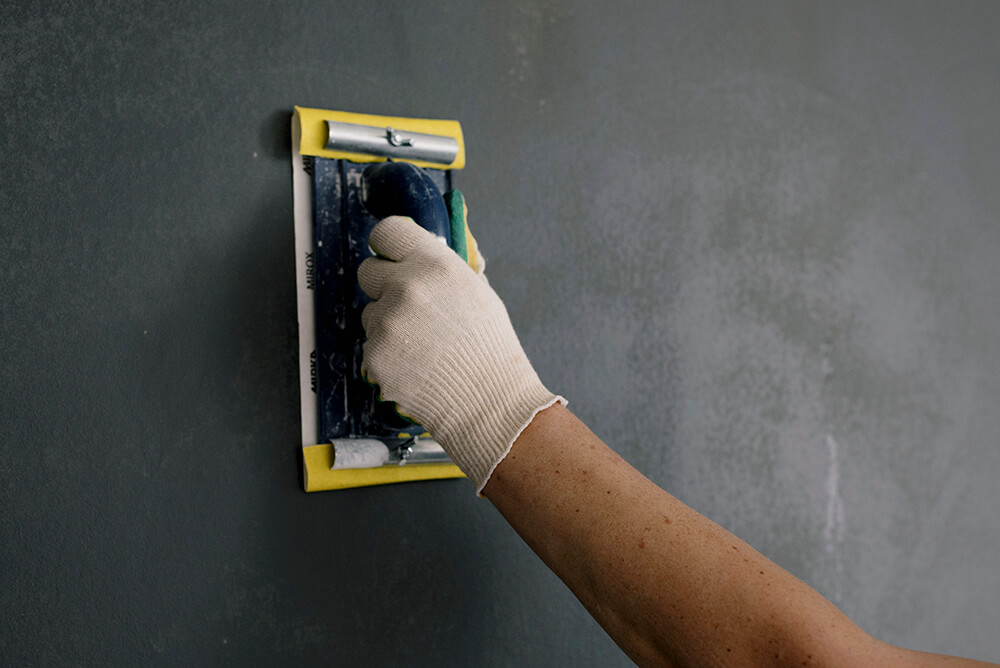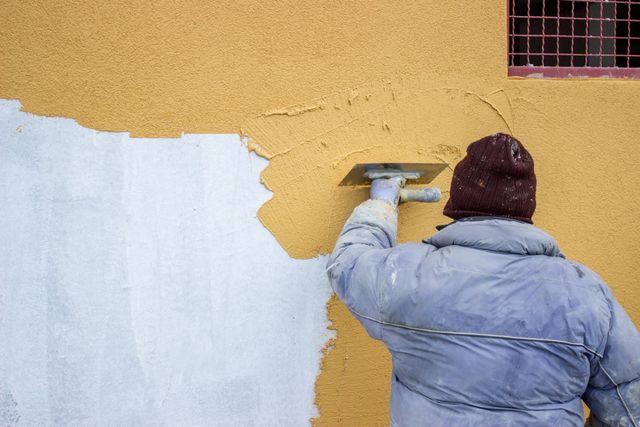The Ultimate Overview to Selecting an Experienced Stucco Contractor for Your Needs
The Ultimate Overview to Selecting an Experienced Stucco Contractor for Your Needs
Blog Article
Exploring the Convenience of Stucco in Modern Design
Stucco has actually long been identified for its visual appeal and versatility, yet its function in modern-day style warrants a better evaluation. This material, historically substantial in numerous architectural movements, currently serves as a flexible service that improves both the aesthetic and practical elements of modern frameworks. By exploring its cutting-edge applications, from striking exteriors to energy-efficient layouts, one can value how stucco is redefining the borders of architectural expression. This conversation will reveal not only its transformative potential however also the obstacles it faces in an advancing market.
Historical Relevance of Stucco
The historic importance of stucco is extensive, as it has actually played a critical function in building methods across various cultures for centuries. Coming from in old human beings, stucco was utilized by the Egyptians and Greeks as a resilient and versatile surface for both exterior and interior surface areas. Its adaptability to different environments and capacity to resemble a lot more costly materials made it a favored option.
In the Roman era, stucco ended up being a main attractive element, used thoroughly in public structures, villas, and temples. The Romans refined the application strategies, enabling elaborate styles and relief sculptures. During the Renaissance, stucco experienced a rebirth, specifically in Italy, where it was employed in ornamental details and intricate facades, showcasing the virtuosity of the period.

Modern Applications in Layout
Stucco has actually found renewed significance in modern architecture as a result of its flexibility and visual allure (stucco contractor). This typical product is progressively made use of in contemporary design, bridging the space in between timeless and modern-day looks. Designers and architects appreciate stucco for its versatility, allowing it to be used in various styles-- from minimalist frameworks to specify Mediterranean styles
In household projects, stucco provides a clean, seamless finish that boosts the visual communication of facades. Its capability to adapt to different shapes and surfaces makes it a suitable selection for both new buildings and remodelling jobs. Furthermore, stucco's toughness and reduced upkeep needs contribute to its expanding appeal in urban setups, where durable materials are crucial.
Industrial applications have likewise embraced stucco, with numerous services choosing this product to develop welcoming and distinct shops. Making use of stucco in public structures, such as colleges and recreation center, showcases its possibility for producing aesthetically appealing atmospheres while supplying exceptional insulation residential or commercial properties.
Shade and Structure Advancements
Discovering color and appearance technologies in stucco has actually opened new methods for designers and architects, boosting the product's visual influence in modern building. Current advancements in pigment modern technology have actually permitted a bigger range of shades, enabling developers to develop striking facades that incorporate perfectly with their surroundings or attract attention as vibrant architectural statements. This adaptability in color choice provides engineers the capability to evoke specific psychological feedbacks and harmonize with local aesthetic appeals.
Texture developments have actually similarly transformed stucco applications. Strategies such as troweling, spraying, and marking have brought about diverse surface area coatings, varying from smooth and improved to tactile and tough. These variants not only add to the structure's character but additionally play a crucial function in light communication, improving the aesthetic deepness and dimensionality of surfaces.
Additionally, the intro of synthetic stucco choices has increased layout opportunities, providing improved resilience and climate resistance while maintaining visual appeal. As architects remain to experiment with cutting-edge shade schemes and distinctive coatings, stucco continues to be a critical aspect in contemporary architecture, showcasing the material's flexibility and timeless importance in contemporary layout.
Sustainability and Energy Efficiency
Advancements in shade and structure have not just boosted the aesthetic appeal of stucco yet also paved the means for better concentrate on sustainability and power efficiency in contemporary style. As ecological problems come to be increasingly famous, the building market is transforming its attention to materials that contribute find out favorably to environmental equilibrium.
Stucco, composed mostly of natural products such as sand, concrete, and lime, provides a sustainable option to even more resource-intensive structure materials. Its durability and toughness minimize the need for frequent replacements, thereby decreasing waste and source intake in time. Moreover, modern-day stucco formulations commonly include energy-efficient ingredients that boost insulation buildings, minimizing cooling and heating costs for structures.
The reflective high qualities of stucco can also be engineered to reduce heat absorption, adding to cooler indoor environments and less dependence on fabricated environment control systems. By advertising energy conservation and minimizing the carbon footprint of frameworks, stucco aligns with the principles of sustainable style. As builders and designers adopt innovative techniques and eco-friendly techniques, stucco attracts attention as a accountable and functional choice in modern design.

Instance Studies of Stucco Projects
The flexibility of stucco as a structure material is exemplified in numerous effective building projects that highlight its practical and visual advantages. One noteworthy example is the remodelling of the historical Casa de la Guerra in Santa Barbara, The Golden State. Using stucco not only maintained the structure's Spanish Colonial Revival style but also enhanced its resilience and climate resistance, ensuring durability while maintaining architectural stability.
One more engaging situation is the contemporary residential task, the Cactus Residence in Scottsdale, Arizona. stucco contractor. This striking home attributes a smooth stucco coating that harmonizes with the bordering desert landscape. The stucco's light color mirrors warm, adding to energy effectiveness, while the distinctive surface areas add visual passion
Furthermore, the Kings Cross redevelopment in London showcases the adaptability of stucco in urban settings. The application of stucco on modern mixed-use structures creates a natural aesthetic that respects historical context while welcoming contemporary style principles.
These study show exactly how stucco can serve various architectural functions, from conservation and energy efficiency to aesthetic improvement, making it a flexible option in modern style.
Verdict
 In conclusion, stucco's historical significance and modern convenience make it a valuable product in contemporary style. As shown via numerous situation researches, stucco continues to play a critical role in shaping the building landscape of the modern-day age.
In conclusion, stucco's historical significance and modern convenience make it a valuable product in contemporary style. As shown via numerous situation researches, stucco continues to play a critical role in shaping the building landscape of the modern-day age.
In conclusion, stucco's historic importance and modern convenience Source make it a valuable material in contemporary architecture.
Report this page